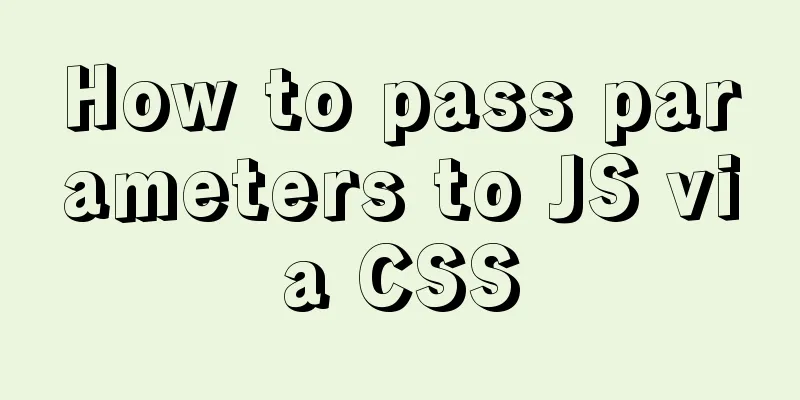JS Easy to understand Function and Constructor

1. Overview The verification code is as follows:
var f = function () {
console.log('this is f function');
}
// A function is also an object console.log(f instanceof Object); // true
// Function is an object of type Functionconsole.log(f instanceof Function); // true
1.1 Creating a function using the Function constructor The grammatical structure is as follows: var functionName = new Function ([arg1[, arg2[, ...argN]],] functionBody) Where The sample code is as follows:
// Function without parameters var fun = new Function('console.log("This is a function")')
fun() // This is a function // A function with one parameter var fun = new Function('a', 'console.log("This function takes one parameter: " + a)')
fun(100) // This function takes one parameter: 100
// Function with two parameters var fun = new Function(
'a, b',
'console.log("This is a function with two parameters, " + a + " and " + b);',
)
fun(100, 200) // This is a function with two parameters, 100 and 200
In actual development, we generally do not use this method to create functions because it is not readable at all. 1.2Function and Object
The verification code is as follows: console.log(Function instanceof Function) //true console.log(Function instanceof Object) //true console.log(Object instanceof Object) //true console.log(Object instanceof Function) //true 2. Constructor 2.1 Custom otherwise function A constructor, also known as a constructor or object template, is a method in an object that is called when it is instantiated. In The syntax for creating a constructor is as follows:
function Person(){
this.property name = property value;
this.method name = function() {
Method Body}
var person = new Person();
Here, The following code shows how to create a constructor and how to instantiate a class through the constructor:
// Custom constructor -> Function: Create object function Person(name, age, sex) {
this.name = name
this.age = age
this.sex = sex
this.print = function () {
console.log(name + 'this year' + age + 'age and gender' + sex)
}
}
// Create a bowl of sweets var t = new Person('a bowl of sweets', 18, 'female')
hong.print() // Yiwantian is 18 years old and female // Create Yiwanzhou var z = new Person('Yiwanzhou', 20, 'male')
dong.print() //A bowl of porridge, 20 years old, male 2.2 Constructor property of an object All objects inherit a constructor property from their prototype: It is important to note that the value of this property is a reference to the function itself, not a string containing the function name. The sample code is as follows:
// Create Yiwan Zhou var z = new Person('Yiwan Zhou', 18, 'Male')
// Check if it is the object of Person constructor console.log(z.constructor === Person)
2.3 Constructors and functionsLet's look at a piece of code first
function Hero() {
// Use as a function var v = 100 // Local variable // Use as a constructor this.set = function (value) {
v = value
}
this.get = function () {
return v
}
}
In this code, first we define a function, which is also a constructor, and of course it is still an object. Since it has three meanings, there are three operations, as shown below
The sample code is as follows: // Call Hero() directly // Create an object through the constructor var hero = new Hero() // Treat it as an object and add properties and methods Hero.n = 'A bowl of Zhou' console.log(Hero.n) // A bowl of Zhou 3. Properties and methods of Function objects The global 3.1length attributeThe length attribute indicates the number of formal parameters of the function. The sample code is as follows:
// Define two empty functions function fun(a, b, c, d) {}
function fn() {}
// Test the length property console.log(fun.length) // 4
console.log(fn.length) // 0
The syntax format is as follows: func.apply(thisArg, [argsArray]) The parameters are explained as follows:
The return value is the result of calling the function with the specified this value and arguments. The following code shows the usage of the apply() method:
// define a function function fn(a) {
console.log('this is ' + a)
}
fn.apply(null, ['function']) // this is function // The above call is equivalent to the following method fn('function') // this is function 3.2call() method The syntax and function of this method are similar to the The following code shows the usage of the call() method:
function fn(a) {
console.log('this is ' + a)
}
fn.call(null, 'function') // this is function // The above call is equivalent to the following method fn('function') // this is function
The parameters are explained as follows: function.bind(thisArg[, arg1[, arg2[, ...]]]) parameter: The return value is a copy of the original function with the specified **this** value and initial parameters. The following code shows the bind() method:
// Define a function var fun = function (a, b) {
console.log('The value of the first parameter is:' + a + 'The value of the second parameter is:' + b)
}
// Call fun()
fun(10, 20) // The value of the first parameter is: 10 The value of the second parameter is: 20
// Create a bound function var fn = fun.bind(null, 100, 200) // Function with default parameter values // Call the newly created function without writing actual parameters fn() // The value of the first parameter is: 100 The value of the second parameter is: 200
4. Arguments Object
Its parameters can also be redefined. The object also provides two properties:
The following code shows the usage of this object. The code is as follows:
/*
* The arguments object is a special object that lives in the function body.
* The arguments object is an array-like object * The arguments object corresponds to the actual parameters passed to the function */
// Define a function var fun = function () {
console.log(arguments)
// arguments.callee points to the currently executing function to which the arguments belong.
//If you add a bracket to this property, it means calling. Because arguments.callee === fun evaluates to true
console.log(arguments.callee)
// arguments.length The number of arguments passed to the function.
console.log(arguments.length)
}
fun(1, 2, 3, 4, 5)
The code execution results are as follows:
[Arguments] { '0': 1, '1': 2, '2': 3, '3': 4, '4': 5 }
[Function: fun]
5
We can use the arguments.length property to determine the number of passed parameters to complete the function overloading. The sample code is as follows:
// Overload of simulation function function add() {
// Record the number of parameters var len = arguments.length
// Use the switch case statement to determine the number of parameters passed in to simulate the overloaded function switch (len) {
case 2:
return arguments[0] + arguments[1]
break
case 3:
return arguments[0] + arguments[1] + arguments[2]
break
case 4:
return arguments[0] + arguments[1] + arguments[2] + arguments[3]
break
default:
break
}
}
console.log(add(1, 2)) // 3
console.log(add(1, 2, 3)) // 6
console.log(add(1, 2, 3, 4)) // 10
5. SummaryThis article introduces how to create a constructor, how to instantiate an object through a constructor, and what methods and properties the Function object provides. How to use it, and finally introduce an Arguments object. This is the end of this article about JS Function and Constructor. For more relevant JS function and constructor content, please search for previous articles on 123WORDPRESS.COM or continue to browse the following related articles. I hope everyone will support 123WORDPRESS.COM in the future! You may also be interested in:
|
<<: Two ways to build Docker images
>>: Examples of using HTML list tags dl, ul, ol
Recommend
How to update the view synchronously after data changes in Vue
Preface Not long ago, I saw an interesting proble...
Detailed explanation of table_open_cache parameter optimization and reasonable configuration under MySQL 5.6
1. Introduction table_cache is a very important M...
Detailed explanation of the solution to the problem of Ubuntu system interface being too small in vmware14Pro
1. Operating Environment vmware14pro Ubuntu 16.04...
How to quickly use mysqlreplicate to build MySQL master-slave
Introduction The mysql-utilities toolset is a col...
Detailed explanation of several ways to obtain the PID (TID, LWP) of Linux threads
In Linux C/C++, thread-level operations are usual...
Using zabbix to monitor the ogg process (Windows platform)
This article introduces how to monitor the ogg pr...
jQuery implements the function of disabling the control button of sending verification code
Required effect: After clicking to send the verif...
CSS setting div background image implementation code
Adding background image control to a component re...
Optimizing the slow query of MySQL aggregate statistics data
Written in front When we operate the database in ...
Solve the problem that Docker cannot ping the host machine under Mac
Solution Abandon the Linux virtual machine that c...
TypeScript enumeration basics and examples
Table of contents Preface What are enums in TypeS...
Solution to the initialization error when installing mysql5.7 from rpm package in centos6.5
1. Upload rz to the server and decompress it rz [...
Implementation of fuzzy query like%% in MySQL
1, %: represents any 0 or more characters. It can...
JS uses canvas technology to imitate echarts bar chart
Canvas is a new tag in HTML5. You can use js to o...
HTML+CSS implementation code for rounded rectangle
I was bored and suddenly thought of the implementa...









